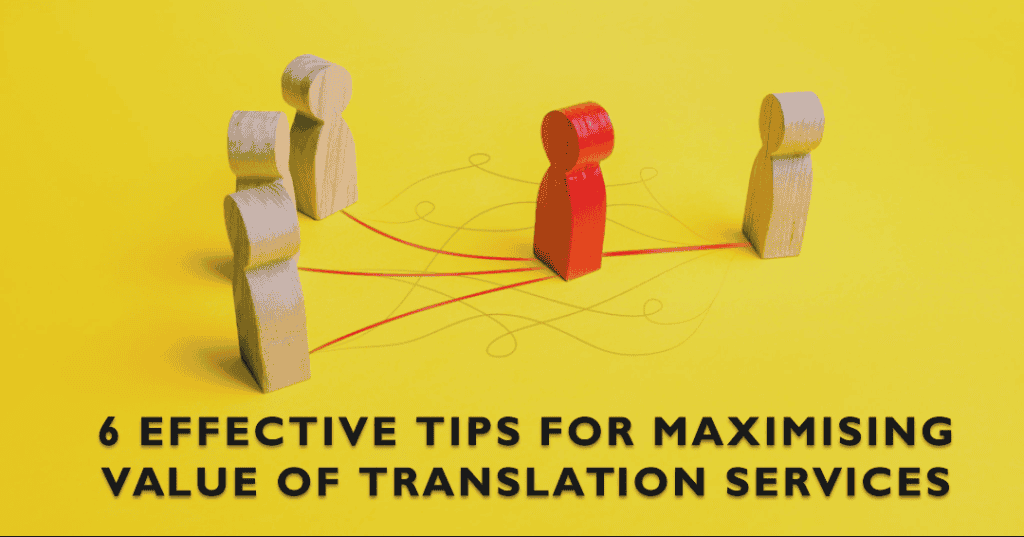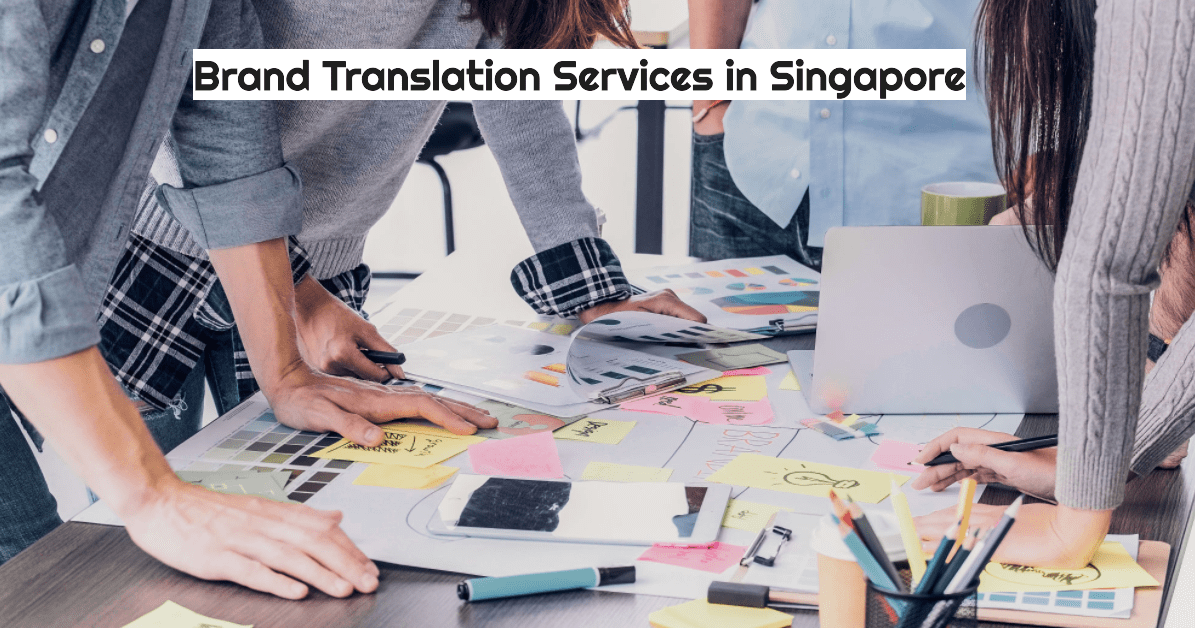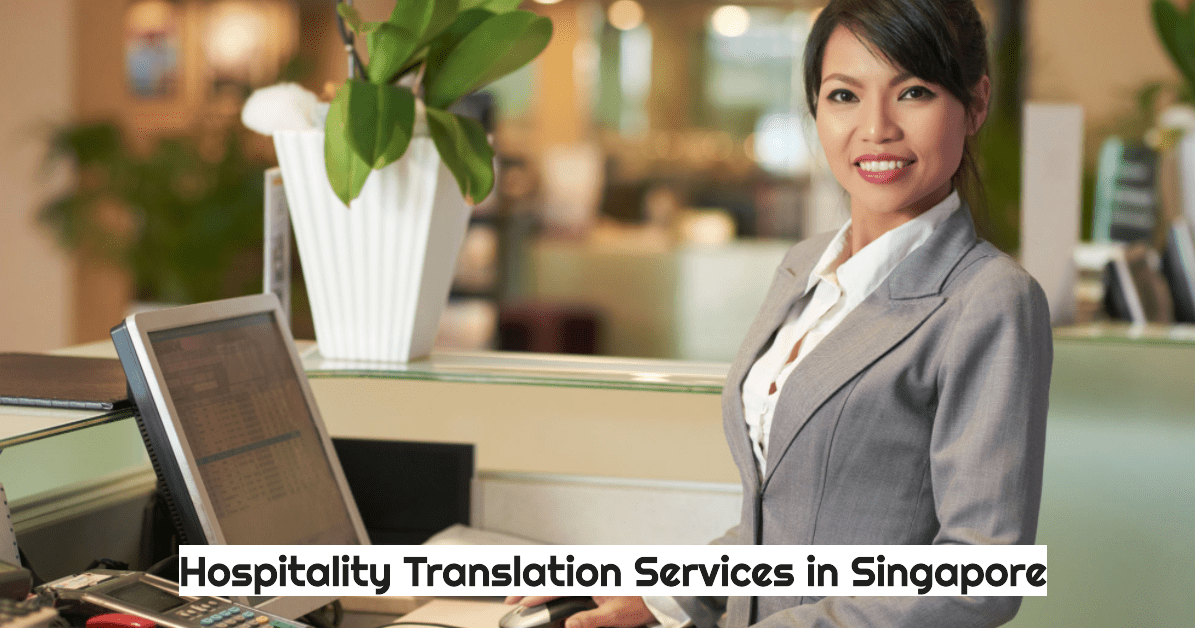Effective Tips for Maximising Value of Translation Services
Are you tired of lost-in-translation moments? Want to make the most out of your professional translation services? Look no further! Effective communication is key.
Without it, you risk stumbling upon numerous challenges and pitfalls that can hinder your project’s success. Poor communication can lead to misunderstandings, inaccuracies, and missed deadlines, ultimately affecting the quality and efficiency of your translations.
Don’t let language barriers get in the way of clear and concise communication. By prioritizing effective communication, you ensure smooth collaboration with translators, accurate conveyance of messages, and timely delivery of results.
So why settle for mediocrity when you can achieve excellence through effective communication in translation services? It’s time to bridge the language gap and unlock a world of opportunities!
Understanding Translation Services
Translation services play a crucial role in facilitating effective communication across different languages. They help bridge the language barrier and ensure that messages are accurately conveyed to diverse audiences. Here are some key points to understand about translation services:
- Definition and Role: Translation services involve the conversion of written or spoken content from one language to another while maintaining its meaning and context. They enable individuals, businesses, and organizations to communicate effectively with people who speak different languages. By providing accurate translations, these services enhance cross-cultural understanding and promote global collaboration.
- Types of Content: Various types of content require translation and localization to cater to specific target audiences. Some common examples include:
- Marketing materials translation: Brochures, websites, advertisements
- Legal documents translation: Contracts, agreements, patents
- Technical document translation: User manuals, product specifications
- Technology translation: Mobile apps, websites
- Medical translation: Research papers, patient information leaflets
Translation services also extend beyond text translation to include interpretation for live events or meetings.
Understanding the importance of translation services and their application in different contexts is essential for maximizing their value in effective communication. By leveraging these services appropriately, individuals and organizations can overcome language barriers and reach wider audiences with their messages.
Value of Effective Communication in Translation Projects
Clear and consistent communication with translation agencies is essential for maximizing the value of translation services. Effective communication not only benefits the overall quality of translations but also enhances efficiency and accuracy.
Benefits of clear and consistent communication with translation agencies:
- Improved understanding: When there is open and effective communication between clients and translation agencies, it ensures a better understanding of project requirements, goals, and expectations.
- Collaboration: Clear communication fosters collaboration between clients and translators, allowing them to work together seamlessly throughout the project.
- Reduced errors Effective and clear communication with translation agencies offers numerous benefits to both clients and translators.
By ensuring that the message is accurately understood, improved understanding is achieved, which in turn leads to a more effective and successful translation process.
Clear communication fosters collaboration between clients and translators, enabling them to work together seamlessly to achieve the desired outcome. This collaboration allows for a better exchange of ideas and feedback, ultimately resulting in a higher quality translation.
Furthermore, clear communication also leads to reduced errors in the final translated document. When expectations and requirements are clearly communicated, there is less room for misunderstandings and mistakes, leading to a more accurate and polished translation.
Additionally, reduced errors contribute to a more efficient and time-saving translation process, as it minimizes the need for revisions and corrections.
How effective communication enhances translation quality, efficiency, and accuracy:
Contextual knowledge, which is often crucial for accurately conveying the nuances of a message, can be obtained through open and clear communication between translators and clients.
Timely feedback from both parties also plays a vital role in ensuring the accuracy and quality of the final translation. This feedback allows for any misunderstandings or errors to be addressed and corrected promptly, ultimately enhancing the accuracy of the translated content.
Additionally, streamlined workflow, facilitated by effective communication, ensures that the translation process is efficient and completed within the designated time frame.
By maintaining clear and continuous communication throughout the translation process, the overall quality and accuracy of the final product can be significantly improved.
Open lines of communication enable both parties to discuss project timelines, deadlines, milestones, and any potential challenges. This facilitates efficient planning and execution of translation projects.
6 Tips for Effective Communication with Translation Agencies
In this section, we will present our top 6 tips on maximising values of translation services to generate great result from your translation projects and expand your business to the next level.
Establish Clear Objectives and Expectations
- Clearly define project goals, timelines, and quality standards upfront.
The specific objectives that the project aims to achieve. These can include increasing sales, improving efficiency, developing a new product, or any other desired outcome.
Timelines: The specific dates and deadlines by which various project tasks and milestones should be completed. These can include the start and end dates of the project, as well as deadlines for key deliverables and milestones.
Quality standards: The criteria and specifications that define what is considered acceptable and satisfactory in terms of the project’s deliverables. This can include factors such as functionality, performance, durability, safety, and any other relevant quality measures.
By clearly defining these elements upfront, all stakeholders can align on the project’s objectives, expectations, and requirements, which can help minimize misunderstandings and ensure that the project stays on track and delivers the desired outcomes.
- Communicate specific requirements and preferences to avoid misunderstandings.
When communicating specific requirements and preferences, it is important to be clear and detailed in your instructions.
Use specific language and provide as much detail as possible to avoid misunderstandings.
If there are certain elements that are non-negotiable, be sure to clearly state that as well. Additionally, consider providing examples or visual aids to further clarify your needs and preferences.
Effective communication is key to ensuring that your requirements and preferences are understood and met.
Provide Contextual Information
- Share comprehensive background information about the content to be translated.
- Provide relevant reference materials, style guides, and glossaries for better accuracy.
In order to ensure a high level of accuracy and precision in the translation process, it is essential to provide contextual information that includes comprehensive background details about the content to be translated.
This information will enable the translator to fully understand the subject matter and produce a translated version that accurately reflects the original meaning and intent.
Additionally, providing relevant reference materials, style guides, and glossaries will further assist the translator in achieving better accuracy and consistency in the translation.
These resources will serve as valuable tools for the translator to consult during the process, ensuring that the final translation adheres to the specified style and terminology requirements.
By supplying such contextual information and reference materials, we can enhance the quality and effectiveness of the translation process.
Foster a Partnership Mindset with the Translation Company
- Maintain regular communication channels with the translation agency.
- Encourage translators to ask questions and seek clarifications for better understanding.
- Regularly review and provide feedback on the translated content.
- Request feedback from translators on the translation process.
It is important to maintain regular communication with the translation agency to ensure that all translation projects are completed on time and according to the desired quality standards.
This can be achieved by setting up regular check-in meetings, providing feedback on completed projects, and keeping the agency updated on any changes or new requirements.
By establishing a strong communication channel, you can ensure a smooth and efficient translation process for all of your projects.
Collaborate on Terminology and Style
- Establish consistent terminology and style preferences for the translated content.
- Collaborate with translators to create a translation glossary or style guide.
- In order to ensure a cohesive and professional translation of content, it is essential to establish consistent terminology and style preferences.
By collaborating with translators, a translation glossary or style guide can be created to standardize linguistic choices and formatting.
This will not only ensure that the translated materials maintain the intended meaning and tone, but also guarantee a consistent and coherent voice across all translated documents.
By working closely with translators to develop these guidelines, any ambiguity or confusion surrounding linguistic choices can be minimized, ultimately leading to a more polished and professional final product.
Additionally, creating a collaborative environment for discussing terminology and style preferences can foster a sense of inclusivity and collective ownership over the quality of the translations.
Utilise Translation Process and File-sharing System
- Implement a TMS to streamline communication and project management.
- Leverage TMS features for real-time collaboration, feedback, and file sharing.
- Automate processes to streamline translation workflows.
Implement a translation management system (TMS) to centralize and automate translation workflows.
By setting up such a system, we can present an automatic file format conversion and handling to streamline the process of receiving and delivering translated content in the appropriate formats.
Secondly, we can integrate with content management systems (CMS) and other platforms to automate the extraction and importing of content for translation, as well as the reintegration of translated content back into the original system.
Thirdly, utilise translation memory and terminology management tools to automatically suggest and apply previously translated segments and maintain consistency across translations.
Implement a workflow automation tool to route translation tasks, obtain necessary approvals, and trigger notifications to stakeholders at each stage of the process.
Such a system can schedule translation tasks, assign translators, track progress, and manage translation memory and glossaries.
Flexibility
Work with a flexible translation company that can adapt to your needs.
When looking for a translation company, it is important to find one that can adapt to your specific needs.
A flexible translation company will be able to provide customized solutions that meet your requirements, whether you need document translation, website localization, or interpretation services.
Additionally, a flexible translation company will have the ability to work with various file formats, accommodate tight deadlines, and provide support for different languages translation.
This level of adaptability is essential for businesses and organizations that operate in diverse and dynamic environments.
Ultimately, working with a flexible translation company can help ensure that your communication needs are effectively met, no matter how complex or unique they may be.
By collaborating with a company that is responsive and adaptable, you can expect high-quality and reliable translation services that align with your specific needs and goals.
By following these tips, you can maximize the value of translation services by ensuring effective communication with your chosen translation agency.
Effective Communication for High-Quality Translation Services
In conclusion, effective communication plays a crucial role in maximizing the value of translation services.
By understanding the importance of clear and concise communication, you can ensure successful collaboration with translation agencies and achieve your desired outcomes.
To optimize your communication with translation agencies, it is essential to provide detailed project briefs, including specific requirements and expectations.
This will help the agency understand your needs accurately and deliver high-quality translations that meet your objectives.
Maintaining open lines of communication throughout the project is vital.
Regularly checking in with the agency, providing feedback, and promptly addressing any concerns or questions will foster a collaborative environment and lead to better results.
Remember to leverage the technology tools available for effective communication.
Utilizing project management platforms or translation management systems can streamline workflows, facilitate seamless collaboration, and enhance overall efficiency.
Finally, always prioritize clarity in your instructions and work with a flexible translation company to meet your translation requirements.
Using simple language, and avoiding jargon or technical terms whenever possible, ensures that there is no room for misinterpretation or confusion during the translation process.
By following these tips for effective communication with translation agencies, you can maximize the value of their services and achieve successful outcomes for your projects.
Frequently Asked Questions (FAQs) section
1. How do I find a reliable translation agency?
Finding a reliable translation agency involves thorough research.
Look for agencies such as WhizWordz International with a strong reputation, positive client reviews, and experience in your industry or niche.
Ask for samples of their work or request references from previous clients to assess their quality and reliability.
2. What should I include in my project brief?
Your project brief should include details such as target audience demographics, desired tone/style of translation, specific terminology preferences if applicable, deadlines, and any additional requirements unique to your project.
3. How can I ensure accurate translations?
To ensure accuracy in translations, provide reference materials such as glossaries or style guides when available. Clearly communicate any brand guidelines or specific terminology that must be adhered to.
Regularly communicate with the translation agency and provide feedback throughout the process.
4. What if I am not satisfied with the translation?
If you are not satisfied with the translation, communicate your concerns to the agency promptly. Provide specific examples of what needs to be revised or improved. A professional agency will work closely with you to address any issues and make necessary adjustments.
5. How can technology aid in effective communication?
Technology tools such as project management platforms or translation management systems can facilitate efficient communication by providing a centralized platform for collaboration, file sharing, and real-time updates on project progress.
Remember, effective communication is key to maximizing the value of translation services and achieving successful outcomes for your projects.




